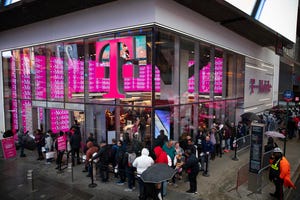
DALLAS – TIA 2011 -- Pervasive high-definition video is transforming wireline and wireless networks and is the reason Verizon Communications Inc. (NYSE: VZ) is testing the speed limit on its fiber-based FiOS network and all-IP Long Term Evolution (LTE) network.
Verizon FiOS, which spans 16 million households, was designed to handle the growing volume of HD content available today, Tony Melone, executive VP and CTO of Verizon and former CTO of Verizon Wireless , told TIA attendees in his keynote address Thursday. And he's not worried about meeting future demand either.
"FiOS is a great example of building a high-definition network to meet customer demands and needs over the next decade," he said. This has enabled Verizon to increase broadband speeds to 150 megabytes per second, which means consumers can download full-length HD movies in just 4.5 minutes.
Verizon engineers have also tested 1 gigabyte per second to the home over existing fiber, as well as 10-gigabyte-per-second speeds with next-generation PON technologies. On this future network, the same HD movie would download in 4.5 seconds, Melone said.
"Whether we'll see the need for those speeds is debatable," he added, admitting that the industry seems to have underestimated bandwidth and consumer demands every step of the way. "We can't afford to do that. We as an industry have to be prepared to meet it."
Verizon's FiOS network is increasingly converging with its high-speed LTE network, which Melone said would reach 175 markets by the end of the year and the entire country within the next three years. Here again, speed tests have exceeded Verizon's expectations, he said. But the "wow factor" is the low latency of the network that enables two-way video, mobile gaming and enterprise opportunities in health care, smart energy and education. (See Verizon Speeds Up LTE Expansion and Verizon Devising Uber Strategy for Home Services.)
Verizon will have 10 LTE smartphones by mid-year and is in the process of testing voice-over LTE. Melone stressed that the carrier is not abandoning its 3G CDMA and will also implement Wi-Fi solutions to support its customer usage patterns. It takes more than a fatter pipe, he said. It takes advanced intelligence built into all the networks.
"Just as we think LTE and fiber are the technology platforms of the future, we believe collaboration and openness are the platforms of the future," Melone said.
— Sarah Reedy, Senior Reporter, Light Reading Mobile
About the Author(s)
You May Also Like











